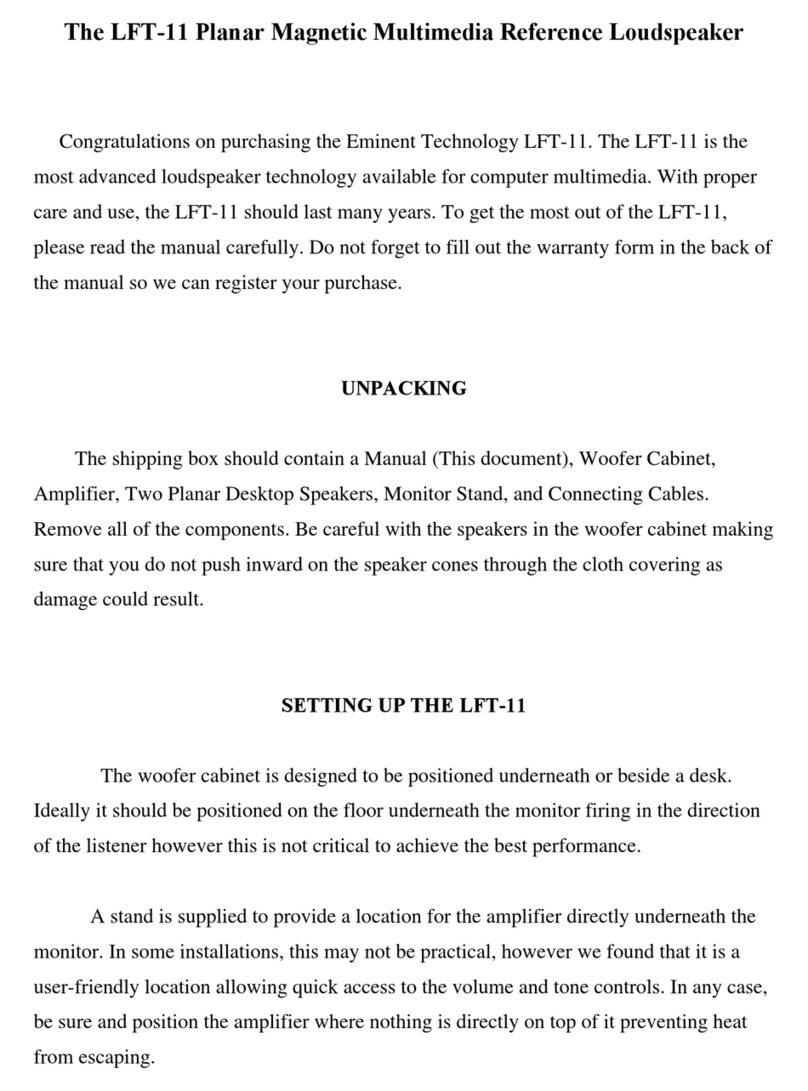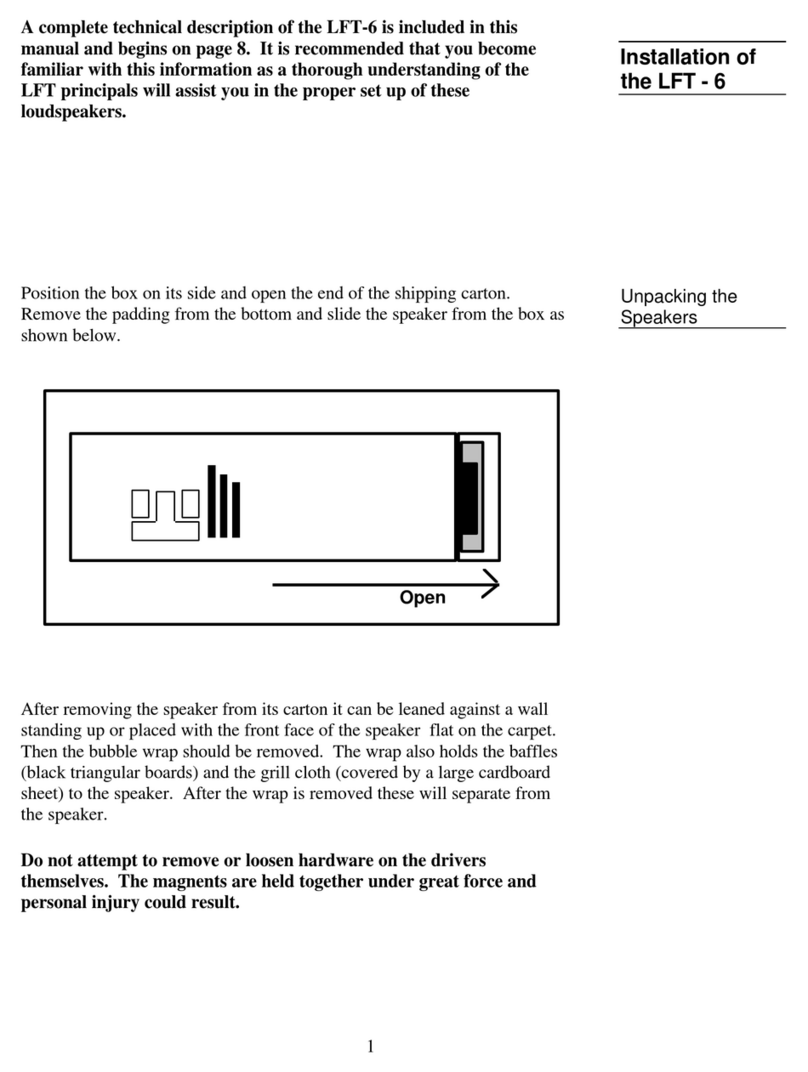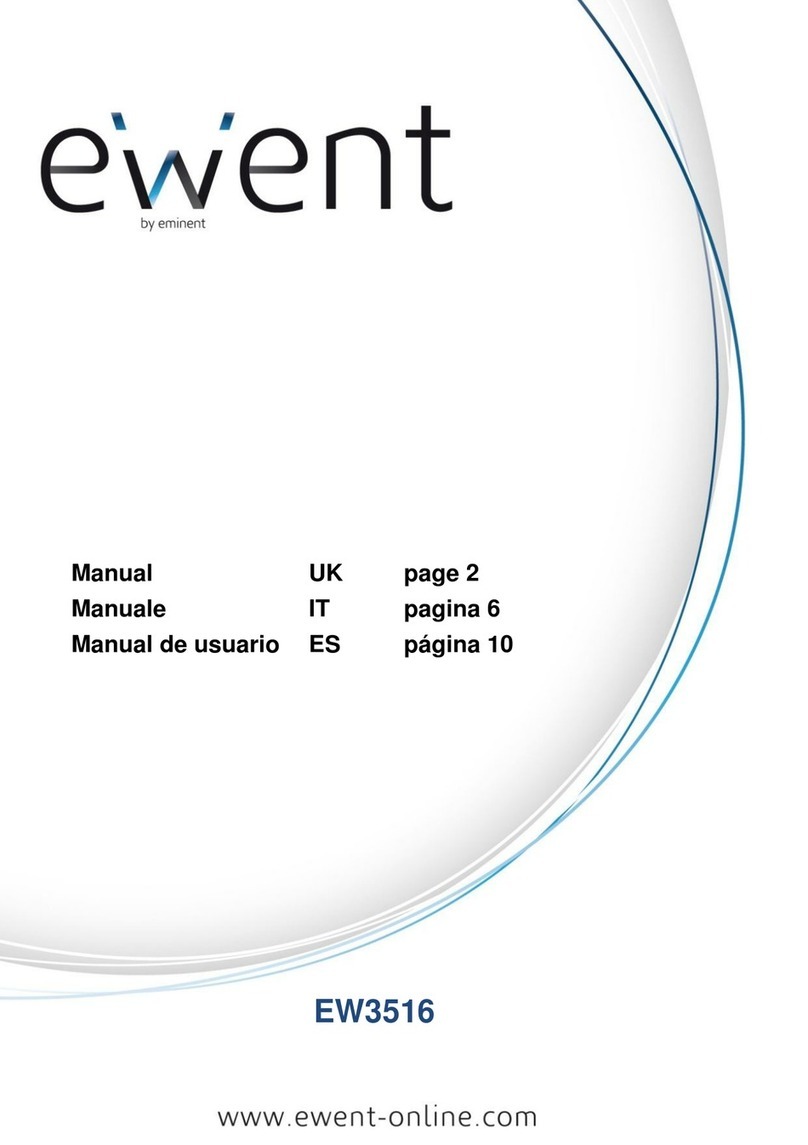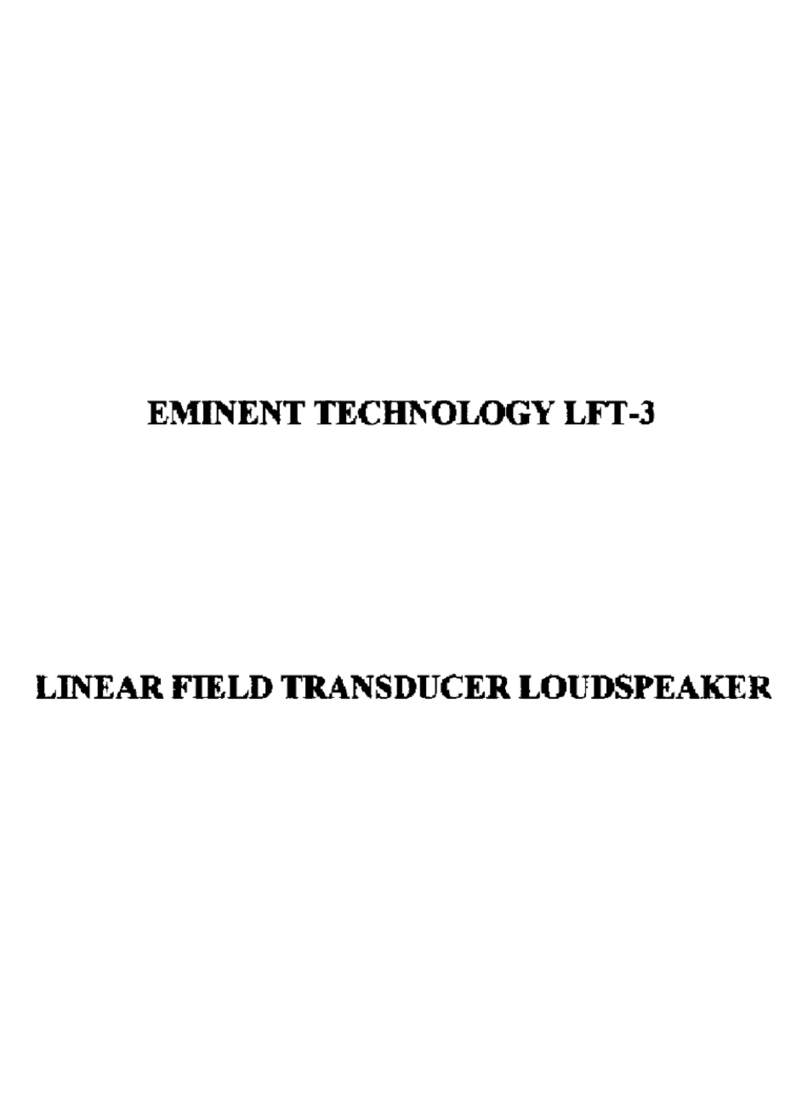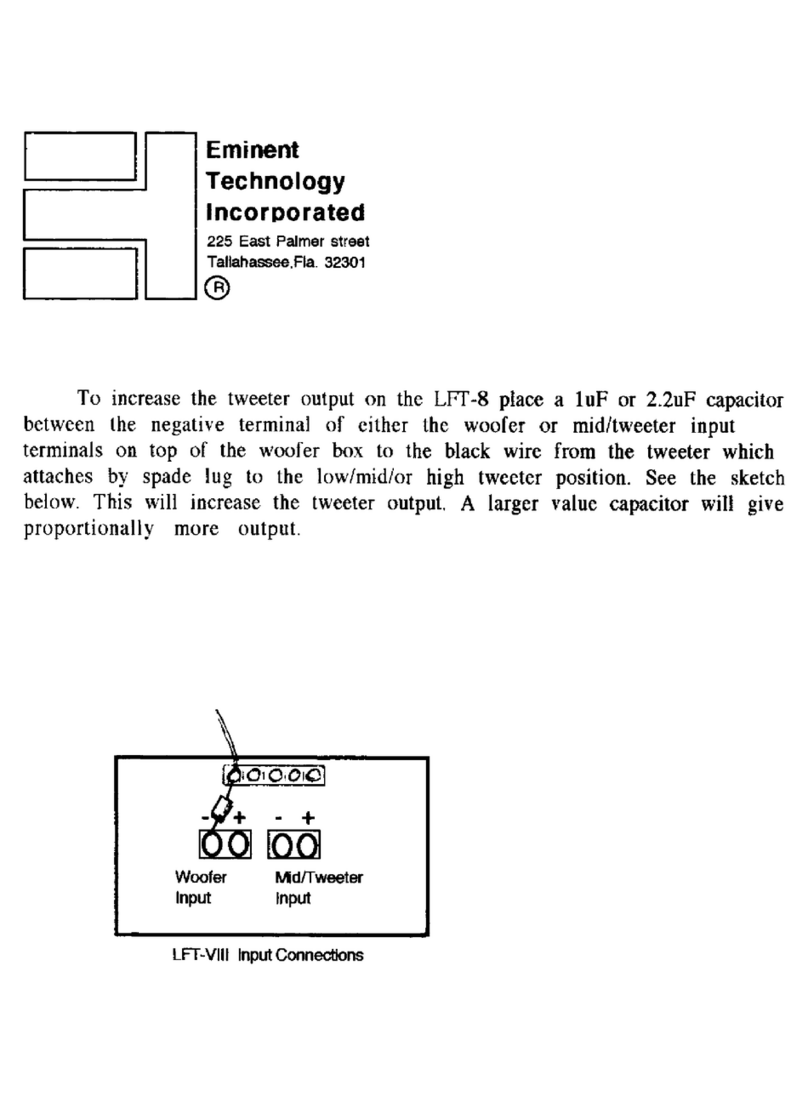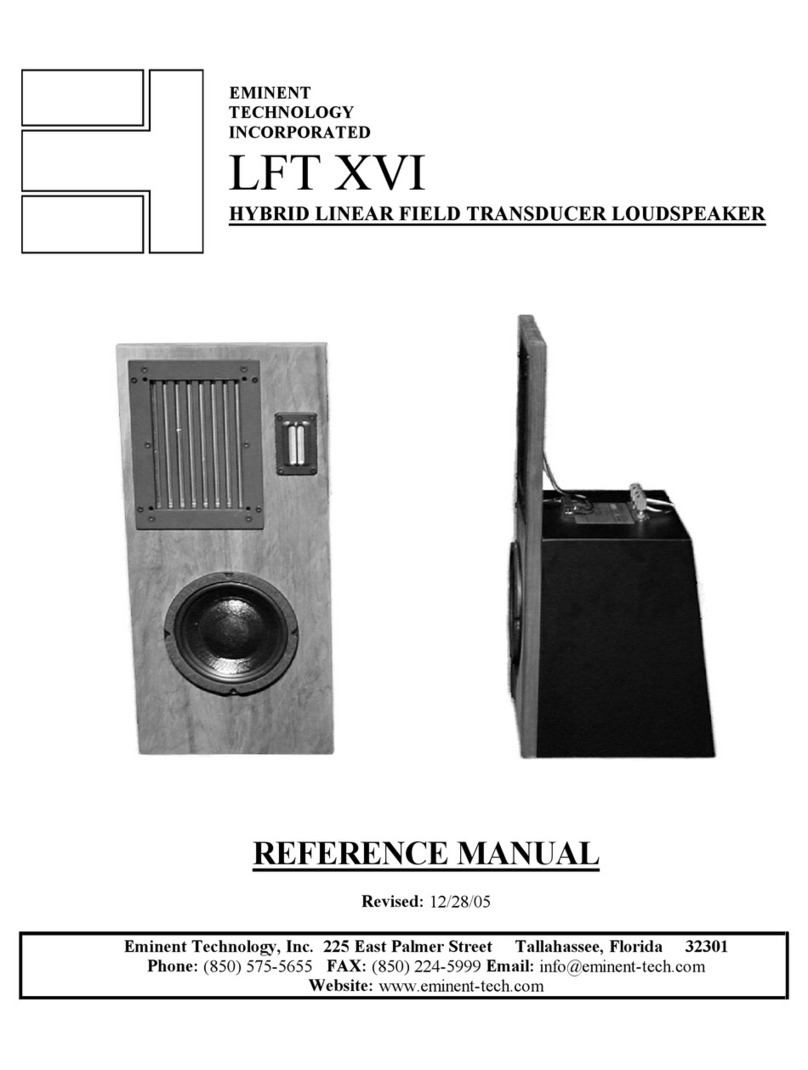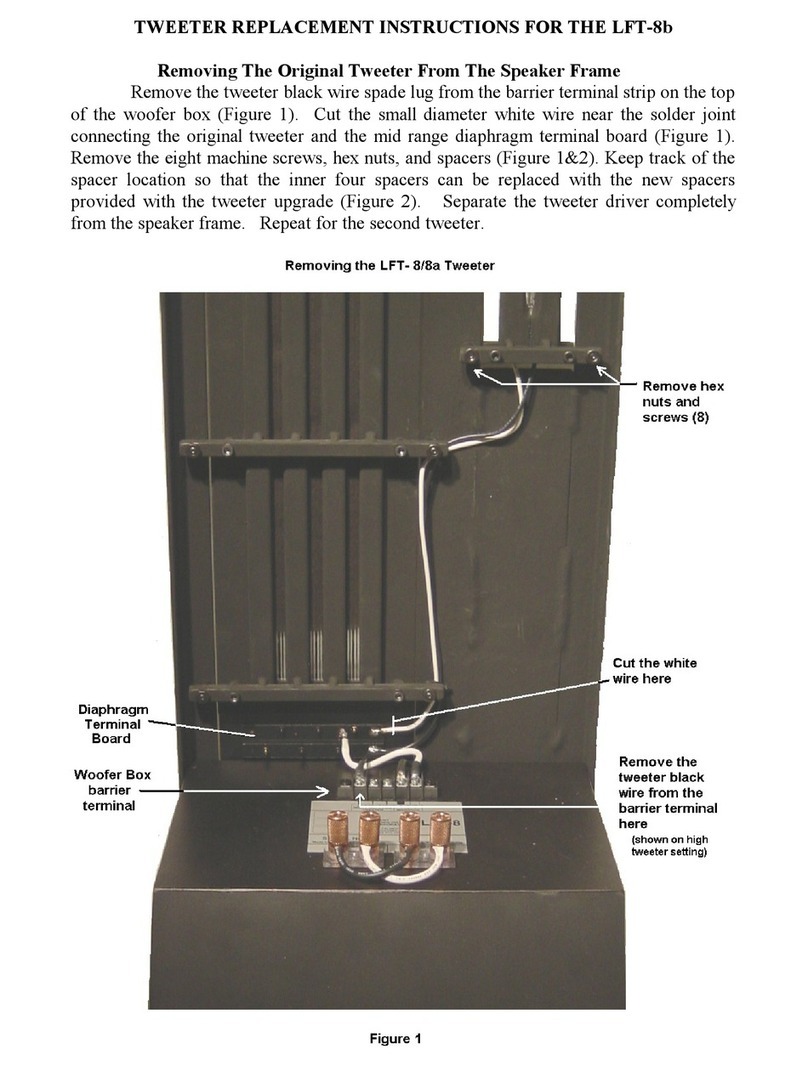
3
TABLE OF CONTENTS
Installation of the LFT-VIII........................................................5
Unpacking the Speakers.............................................................5
Speaker Assembly......................................................................6
Positioning the Speakers in the Listening Room.......................7
Imaging ......................................................................................7
The Tweeter Level Control........................................................8
Amplifier Requirements.............................................................8
Bi-Wiring and Bi-Amping.........................................................9
Bi-Amping .................................................................................9
Technical Description................................................................10
Electrostatic Loudspeakers ......................................................11
Planar Magnetic Loudspeakers................................................12
Ribbon Loudspeakers...............................................................13
Evaluating Earlier Approaches................................................14
Electrostatics............................................................................14
Planar Magnetics......................................................................14
Ribbons ....................................................................................14
The Linear Field Transducer....................................................16
Diaphragm Construction..........................................................16
The Magnet/Frame Structure...................................................16
Panel Frequencies ....................................................................18
General Specifications...............................................................19
LFT-VIII Impedance Curve.....................................................20
LFT-VIII Impedance Data........................................................21
Crossover Information..............................................................22
Square Wave Performance ......................................................23
Frequency Response Curve.......................................................24
LFT-VIII Panel Specifications..................................................25
Mid Range Panel Design...........................................................26
LFT-VIII Woofer Specifications..............................................27
Additional Woofer Specifications.............................................28
